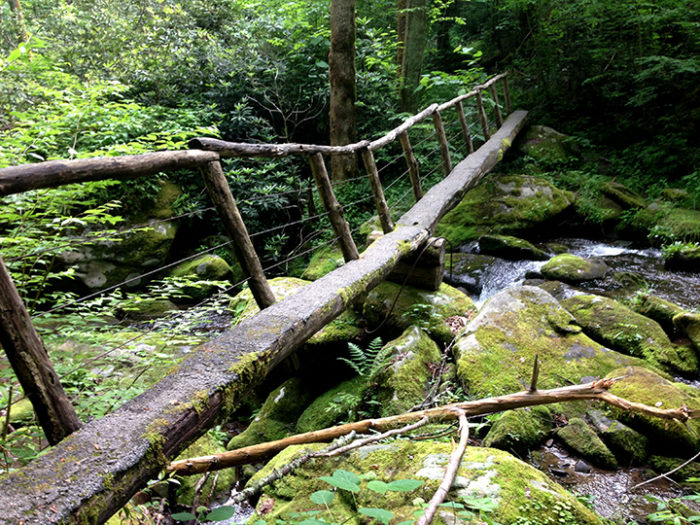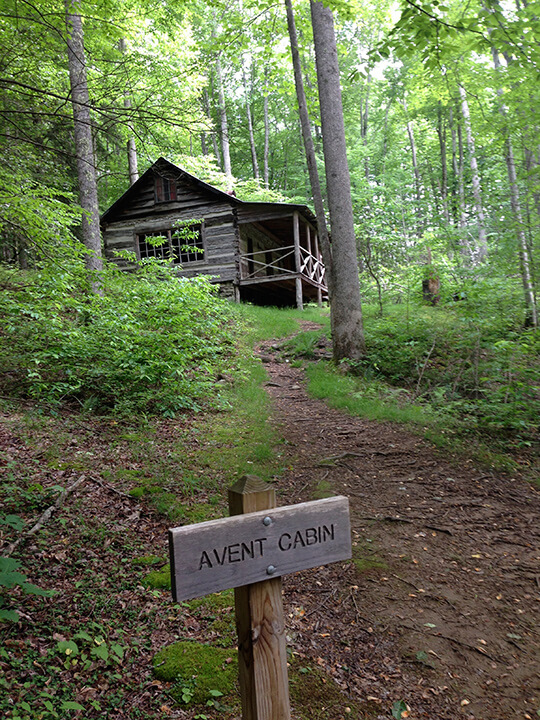by Julie Dodd
More than 100 years ago Frank and Mayna Treanor Avent purchased a cabin along Jakes Creek in the Smokies to be their summer retreat. Avent Cabin still stands and is a treat to explore for anyone who ventures across the log bridge to find it.
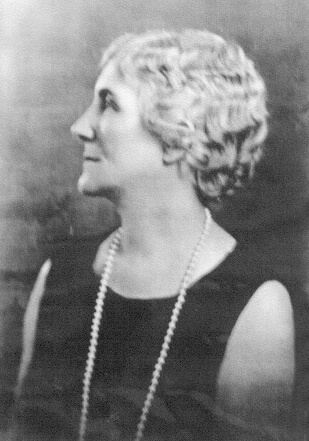
Their great grandson Bryan MacKinnon has created a website to share stories about Avent Cabin and to pay tribute to his great grandmother, a recognized Southern artist who is one of four women on Great Smoky Mountains National Park’s webpage of “Women of the Smokies” and is included in Courtney Lix’s book “No Place for the Weary Kind: Women of the Smokies.”
Bryan and other descendants of Frank and Mayna Treanor Avent continue the couple’s love of the Smokies, including donating to Friends of the Smokies to support GSMNP programs.
I enjoyed having the opportunity to talk with Bryan about Avent Cabin, his great grandmother, his family’s love of the Smokies, and his website.
Bryan grew up in Tennessee and graduated from the University of Tennessee with a degree in computer science. His career started in technology for physics research and then in banking technology, and he has lived and worked for a significant portion of his life first in Chicago and then in Japan, Singapore and Toronto. But over the years, he regularly returns to the Smokies, checking on Avent Cabin.
Mayna Treanor Avent died in 1959, the year before Bryan was born. He heard stories about his great grandmother from his mother – Mayna Avent MacKinnon Nance, who was named after her grandmother and also was an artist. From the 1960s until 1992, Bryan vacationed at the Avent Cabin with his family.
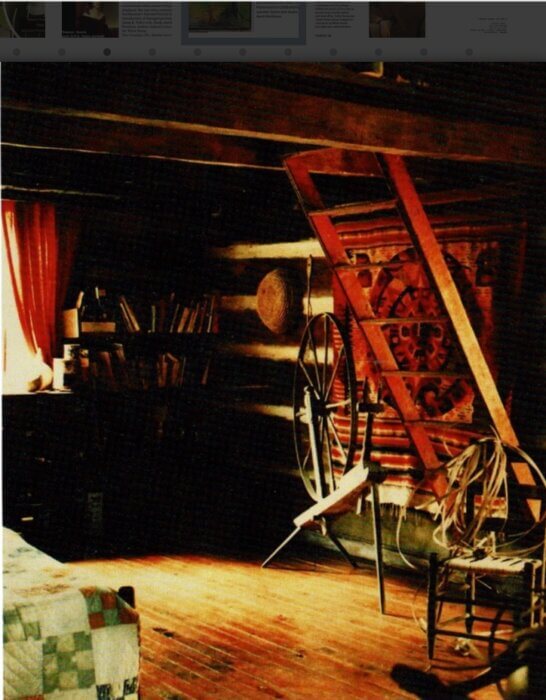
Bryan said that even until the 1990s, the cabin never had electricity or indoor plumbing the water in the kitchen sink was piped from a nearby spring. Heat was provided by the fireplace or an iron burning stove.
Bryan’s website tells the highlights of his great grandmother’s life and includes photographs of her, her artwork and the Avent family.
The website also includes photographs of the Avent Cabin and its interior when the family lived in it, as well as information about what were nearby cabins. The website describes the cabin’s construction and the saga of having the cabin listed on the National Register of Historic Places.
Background on Mayna Treanor Avent and the Avent Cabin
By the time Mayna Treanor married attorney Frank Avent in 1891, she had studied art in Nashville, Cincinnati, and for two years in Paris at the Academie Julian, a private art school whose alumni included Henri Matisse and John Singer Sargent.
In 1910, the couple and their two children (Mary and James) moved to Nashville from Murfreesboro. Frank was Railroad Commissioner for the state of Tennessee. Mayna taught art lessons and was active in the art community.
Frank purchased the couple’s first cabin in the Smokies in 1910, before GSMNP was established and when Elkmont was a retreat destination for well-to-do families. The couple and their children spent summers vacationing at their cabin, located near the Appalachian Club.
During the summers in Elkmont, Mayna painted outdoors, painted still lifes, and painted portraits of neighbors and Smokies residents.
Frank purchased what is now called Avent Cabin in 1918 from the Ownby family. Frank and Mayna moved from their first cabin to Avent Cabin on the outskirts of Elkmont to be closer to the cabin owned by their daughter Mary Avent Adams and her husband. Avent Cabin became Mayna’s studio.
Their son, James (Jimmy), moved to China in 1919 with his job with Standard Oil. He visited his family at Avent Cabin whenever he was on leave along with his wife, Jeanette, and their children, who all were born in China before WWII.
Jimmy and his father spent one summer renovating the cabin, including adding a large window to provide more light for Mayna’s studio. In 1926, Frank and Mayna passed ownership of the cabin to Jimmy.
Impact of establishing GSMNP
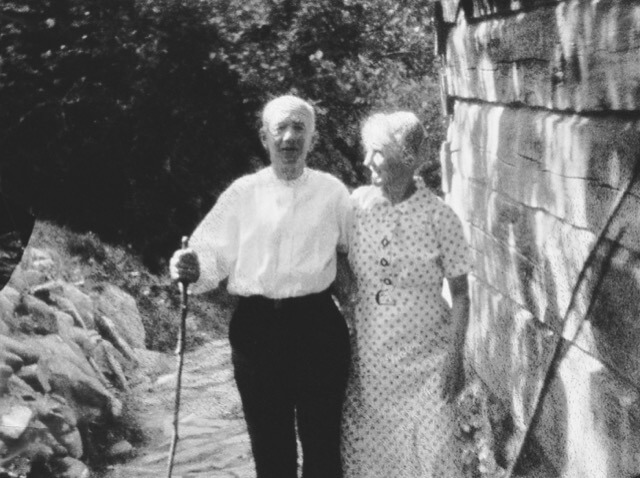
As the loggers cleared the mountainsides in the Smokies, Frank and Mayna became supporters of the establishment of Great Smoky Mountains National Park. In 1932, ownership of the cabin and land was transferred to the National Park Service.
The Park Service granted Jimmy Avent a lifetime lease on the cabin. The park renegotiated the lease in 1972 and terminated the lease in 1992, around the same time Elkmont leases in general were terminated by the park.
Bryan said that the park planned to disassemble Avent Cabin when the lease expired, as happened for most structures that were built before the national park was established. But his mother had other plans.
Avent Cabin and National Register of Historic Places
Bryan’s mother, Mayna, wanted to have Avent Cabin listed on the National Register of Historic Places, which would mean that the cabin would be preserved. But getting the cabin on the Register was a complex process.
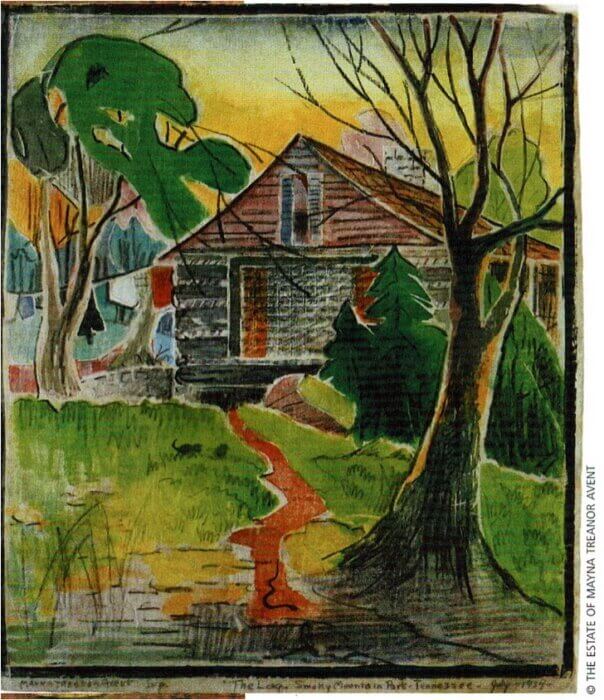
She spent more than a year putting together a 18-page application and supporting documents that included floor plans of the cabin, detailed descriptions of the cabin’s construction and remodeling, and letters of support, including a letter from the Curator of Art & Architecture for the Tennessee State Museum.
“She had a lot of help,” Bryan said of the many experts she involved in crafting the application.
A key part of the application was the inclusion of Mayna Treanor Avent’s role as a Tennessee artist and describing the cabin was “culturally significant” as her studio and a source of inspiration.
During her career, Mayna Treanor Avent worked in watercolor, oils, pen and ink, charcoal, and woodcut printing. She was a member of the Nashville Studio Club, the Nashville Artists Guild, and the Centennial Club.
She was commissioned to create portraits for the Smithsonian’s National Portrait Gallery and Vanderbilt University School of Medicine. Other museums also acquired her paintings. The Smithsonian has 12 of her paintings, including an oil on board painting of Avent Cabin.
In 1994, Avent Cabin was added to the National Register of Historic Places. On Bryan’s website, you can read more about the process and read the application.
Bryan said his mother told him that the park had been very supportive of Avent Cabin once the cabin was on the National Register. He added that the park and Friends of the Smokies have been essential in maintaining Avent Cabin and other historic structures in the park.
Motivation to create the website
Bryan said that he decided to create the website as a way the family could share their perspective of Mayna Treanor Avent, Avent Cabin and Elkmont.
“Initially my mother was opposed to sharing information about Avent Cabin because she was concerned the cabin would be broken into or vandalized,” Bryan said.
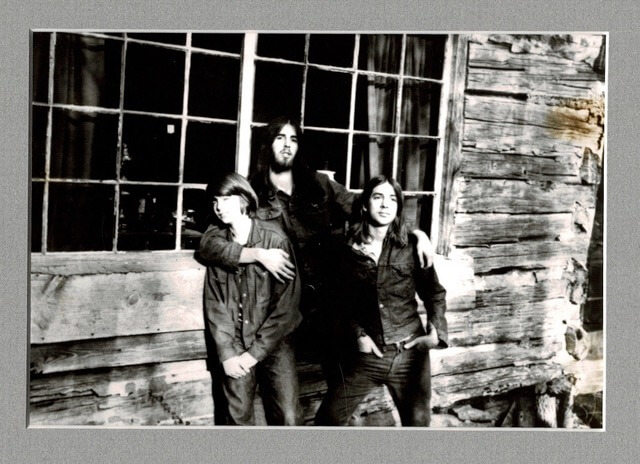
Those concerns were well founded, Bryan explained, as people did break into the cabin, even before 1992 when the family was living in the house. One time someone broke into the cabin and stole most of the pots and pans from the kitchen and artifacts of the cabin’s early days.
But over time, people were posting online stories and photos of Avent Cabin, sometimes including the waypoint for the cabin. Avent Cabin couldn’t remain hidden, Bryan said.
“Whenever I’d visit the cabin, there always were people there who were interested in learning more about the cabin and who had lived there,” Bryan said.
“We know about Avent Cabin because we’ve lived there. Wikipedia can’t convey that. I can convey what it was like when I knew it in the ‘60s, ‘70s, 80’s and 90s and before that from discussions with my mother and her family,” Bryan said.
“The website was a chance to remember what Elkmont was like a hundred years ago.”
Bryan remembers when Jimmy Avent (his grandfather) and Bryan’s mother would talk about the stores and the sawmill that were in what now is the Elkmont Campground. Avent Cabin now is surrounded by trees. But when Frank and Mayna moved into the cabin in 1918, they could see their daughter Mary’s cabin in the distance. At that time, families such as the Ownbys and Cooks who lived in cabins along Jakes Creek cleared some of their land to raise crops and grow apple trees.
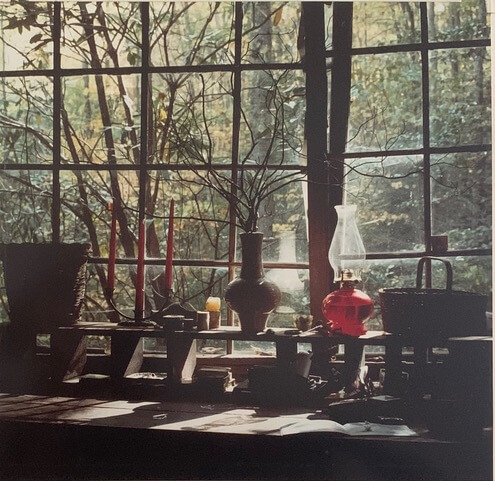
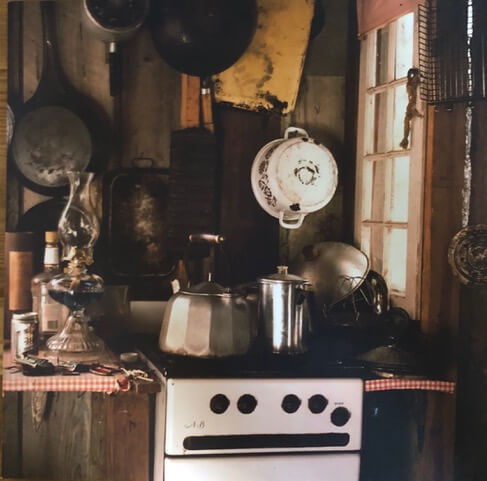
Avent Cabin log book
The Avents started a visitor log book in 1936, placing the book on the desk by the large window. Initially, entries in the log were made by the Avents and friends and family who visited the Avents and those who they invited to stay in the cabin when the Avents weren’t there.
The log book has continued, with the compilation of log book pages being more than 300 pages. The Avent family keeps a log book at the cabin, and hikers who visit Avent Cabin can read what others have recorded and leave their own comments, drawings and poems.
I remember discovering the book in the cabin’s kitchen when I visited Avent Cabin for the first time and our hiking group being intrigued by the stories and the visitors’ entries.
Visiting Bryan’s website gives you the opportunity to step back in time, explore the cabin and enjoy Mayna’s artwork.
